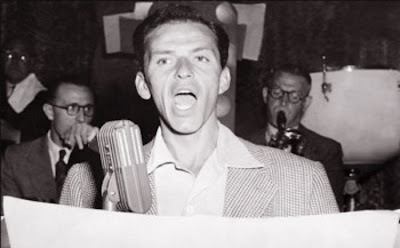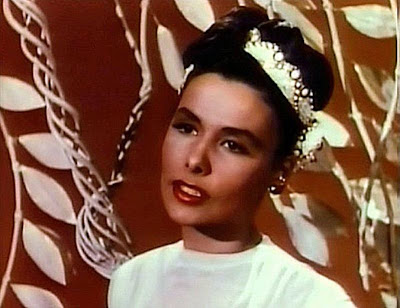Three Dog Night had a big pop hit with it in 1969. Their recording was very much influenced by the late 1966 recording by Otis Redding, as have most of the many recordings made since then.
The song really didn't evolve much up to 1966 and hasn't changed much since then. I think it's safe to say that Otis's recording remains the most influential and if he hadn't made it, most likely I wouldn't be writing about it now. Let's look at the song up to that point.
The song was written by New Yorker Harry M. Woods (I'm Looking Over A Four Leaf Clover, Side By Side), and Londoner's Jimmy Campbell and Reginald Connolly. There must be a story behind that, but I don't know what it is.
The first recording of the song came out of England by the Ray Noble Orchestra with vocal by Val Rosing. It was recorded on 8 December 1932.
It didn't take long to find it's way across the Atlantic. In 1933 it was recorded by Bing Crosby, Ruth Etting and a non-vocal version by Eddy Duchin & His Orchestra.
I'm not sure what happened with Try A Little Tenderness over the next dozen years. I would think it was recorded several times despite recording strikes and war-time shellac shortages, but those recordings seem to have been lost to time.
On Dec. 7, 1945, almost 13 years to the day since it was first recorded, Frank Sinatra recorded it.
On 19 December 1951, it was recorded by Little Miss Cornshucks, who away from the stage was known as Mildred Cummings.
A few months prior to her recording, pianist Eddie Heywood recorded an instrumental version which helped set it off as a jazz standard.
Chris Connor, backed by the Ellis Larkins Trio, did a nice job with it in 1954.
In early 1958, The Platters, featuring Zola Taylor on this song, gave it some good harmony, a faster tempo and a little different sound.
Gloria Lynne did a nice version around 1960, giving the song a nice rhythmic flow.
In 1962 Aretha Franklin was still several years away from her Atlantic Records success. She recorded the song for Columbia on April 27.
So at this point we have about 30 years of Try A Little Tenderness. There were quite a few jazz recordings by then. Patti Page sang it, Sammy Davis Jr. did it, even Paul Peterson, the teen star of the Donna Reed Show, recorded it. Sam Cooke recorded it in a medley with You Send Me and For Sentimental Reasons. In 1966 two recordings were released very close to each other by acts that were managed by Phil Walden. The first one was by Percy Sledge who earlier that year wrote and sang the massive hit When A Man Loves A Woman. Percy's take on Try A Little Tenderness was a breath of fresh air for the tired old song.
Near the end of the year it was recorded by Otis Redding and that recording set a new standard for the song. Not only the great vocals, but the drumming of Al Jackson, the organ playing of Booker T. Jones, some guitar licks of Steve Cropper, bass lines of Duck Dunn and the Mar-Keys horn arrangement can all be heard here and there in most of the recordings done in the past 45 years. The record helped set Otis off on a whirlwind year of success across the United States and Europe which tragically ended about a year after it was made. Most people are very familiar with the Otis Redding recording as well as some of the live performance recordings that followed, but I'm going to feature the rare Take 1 from the studio session.
In June 1967 Otis, backed by Booker T & The MG's, appeared at the Monterey Pop Festival in California along with Big Brother & The Holding Co. featuring Janis Joplin, The Who and the Jimi Hendrix Experience......all virtually unknown in the mainstream music world at that time. Their performances were filmed and the event really became an epic moment in the history of late 20th century music, ending the chapter on the pop/beat group days, turning the page and starting a new chapter. Who can forget the film clip from it of Mama Cass sitting in the audience watching Janis Joplin sing? She had a look of disbelief on her face and for good reason.


















+-+At+Last+%5B5-20-42%5D.jpg)





















.jpg)












.jpg)


